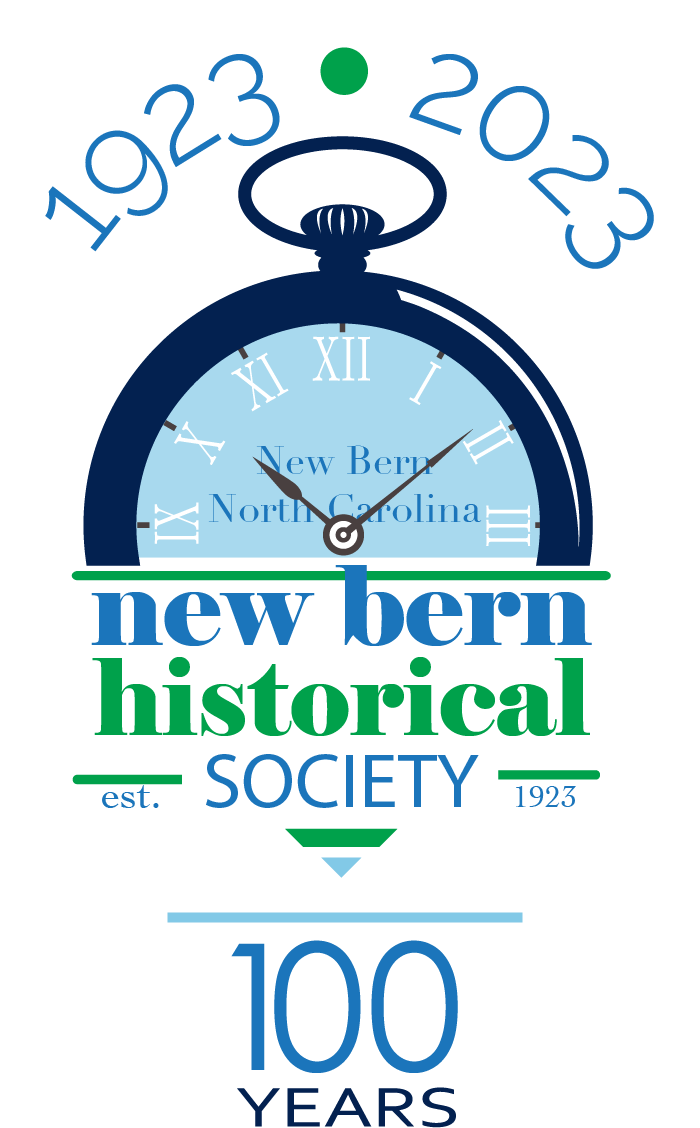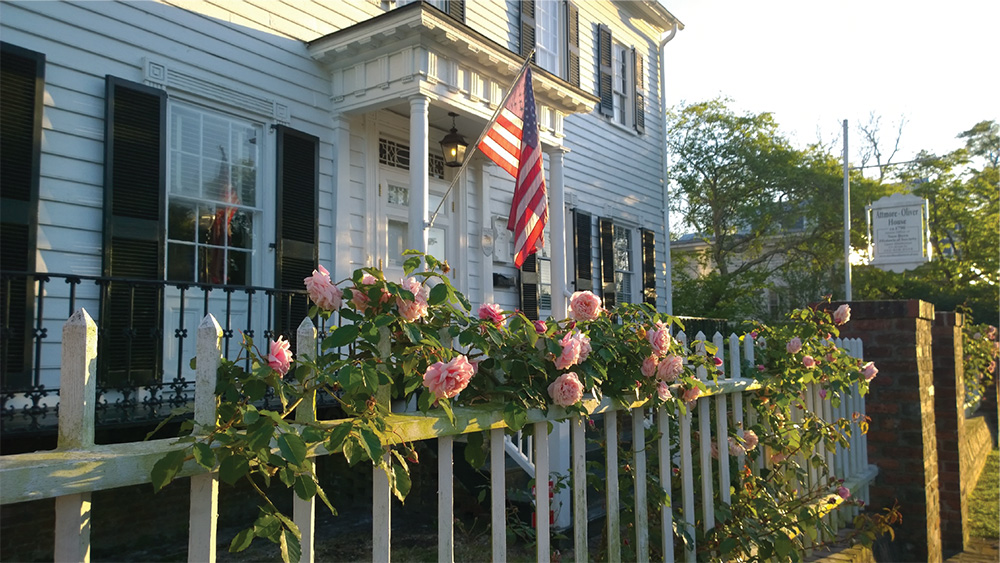Concrete Ships Ahoy!
by Claudia Houston, Historian, New Bern Historical Society
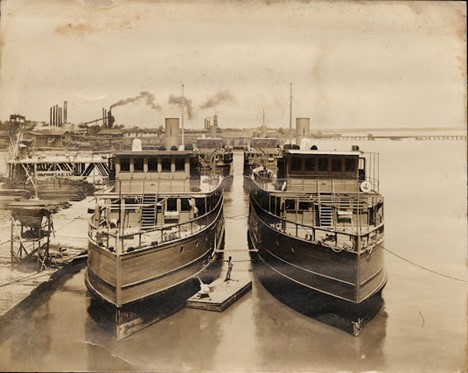
Did you know that the first concrete passenger vessel made in America was built in New Bern? In fact, twelve concrete ships were built here by the Newport Shipbuilding Corporation, with an additional four ships built by them in a shipyard in Wilmington. Why were these ships built and what happened to them?
There was a desperate shortage of steel for shipping during the WWI years; accordingly, the U.S. Shipping Corporation recommended to President Woodrow Wilson that 24 concrete ships be built. This was innovative at the time, but at the prohibitive cost of $50 million, the full 24 ships were not built.
On 15 Nov 1918, Senator Furnifold Simmons announced that his office had received a telegram from Washington D.C. awarding a government contract to the Newport Shipping Corporation to build twelve concrete riverboats at their New Bern Shipyard. The original nine concrete boats were built between 1919-1920. At least 250 men were employed to build these boats, which measured 129 feet long and 28 feet wide. Three other larger boats were constructed at 150 by 28 feet wide. The four boats contracted to be built by the Newport Shipbuilding Corporation at a shipyard in Wilmington were also 150-feet-long.
The Newport Shipbuilding Corporation was located at the foot of North Stanly Street, close to the Neuse River, just two blocks north of downtown New Bern. The Col. J.E. Sawyer was the first ship completed at a cost of $235,384. It was launched on October 18,1919 in front of a crowd of 1000 people. It was 700 tons and able to carry 500 passengers.
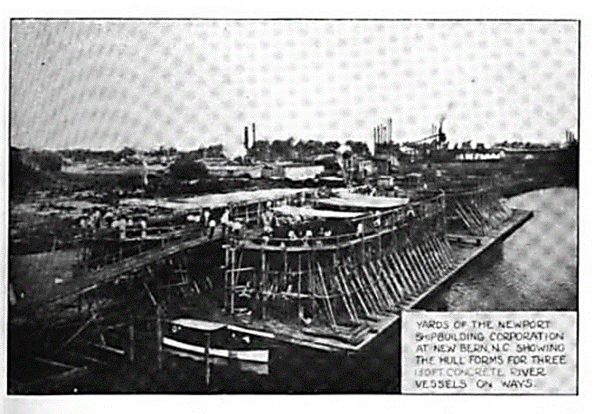
All of the boats were named after respected former Army Quartermasters. The first was the Colonel J.E. Sawyer which was launched October 18, 1919. Colonel J. E. Sawyer was the Chief Quartermaster during the Spanish American War. The ships were supposed to help the war effort but were not completed until after the Armistice was signed. Thus, many were abandoned, disappeared, or repurposed. The fate of many is unknown.
 The Colonel J. E. Sawyer was abandoned in 1921 at Fort Caswell, North Carolina. In 1923 it was purchased by Mr. Joseph Sable, who brought the now decommissioned ship, as well as her sister ship, the Major Archibald Butt, to Charleston, SC. The Major Archibald Butt was sold in 1925 and relocated to Miami, Florida. The Sawyer arrived in Charleston in 1923, but it sank sometime in 1926 causing major problems for the Port authority which dubbed her the “old sunken hull”. That nickname remains to this day. On June 22, 1929, as thousands cheered on shore, the boat was raised and towed to Mt. Pleasant, SC. It is still visible in Charleston Harbor and a sign was erected to explain its history.
The Colonel J. E. Sawyer was abandoned in 1921 at Fort Caswell, North Carolina. In 1923 it was purchased by Mr. Joseph Sable, who brought the now decommissioned ship, as well as her sister ship, the Major Archibald Butt, to Charleston, SC. The Major Archibald Butt was sold in 1925 and relocated to Miami, Florida. The Sawyer arrived in Charleston in 1923, but it sank sometime in 1926 causing major problems for the Port authority which dubbed her the “old sunken hull”. That nickname remains to this day. On June 22, 1929, as thousands cheered on shore, the boat was raised and towed to Mt. Pleasant, SC. It is still visible in Charleston Harbor and a sign was erected to explain its history.
What happened to the Newport Shipbuilding Corporation? It fulfilled its government contracts and there was no need for further ships as they had become surplus. Shortly thereafter, the company was a victim of the Great Fire which occurred in New Bern on December 1, 1922, the largest fire in North Carolina history. It was reported in the Morning New Bernian newspaper on December 10, 2022, that “The Newport Ship building plant is in ruins and hard by. Piers 1 and 2 had been destroyed.”
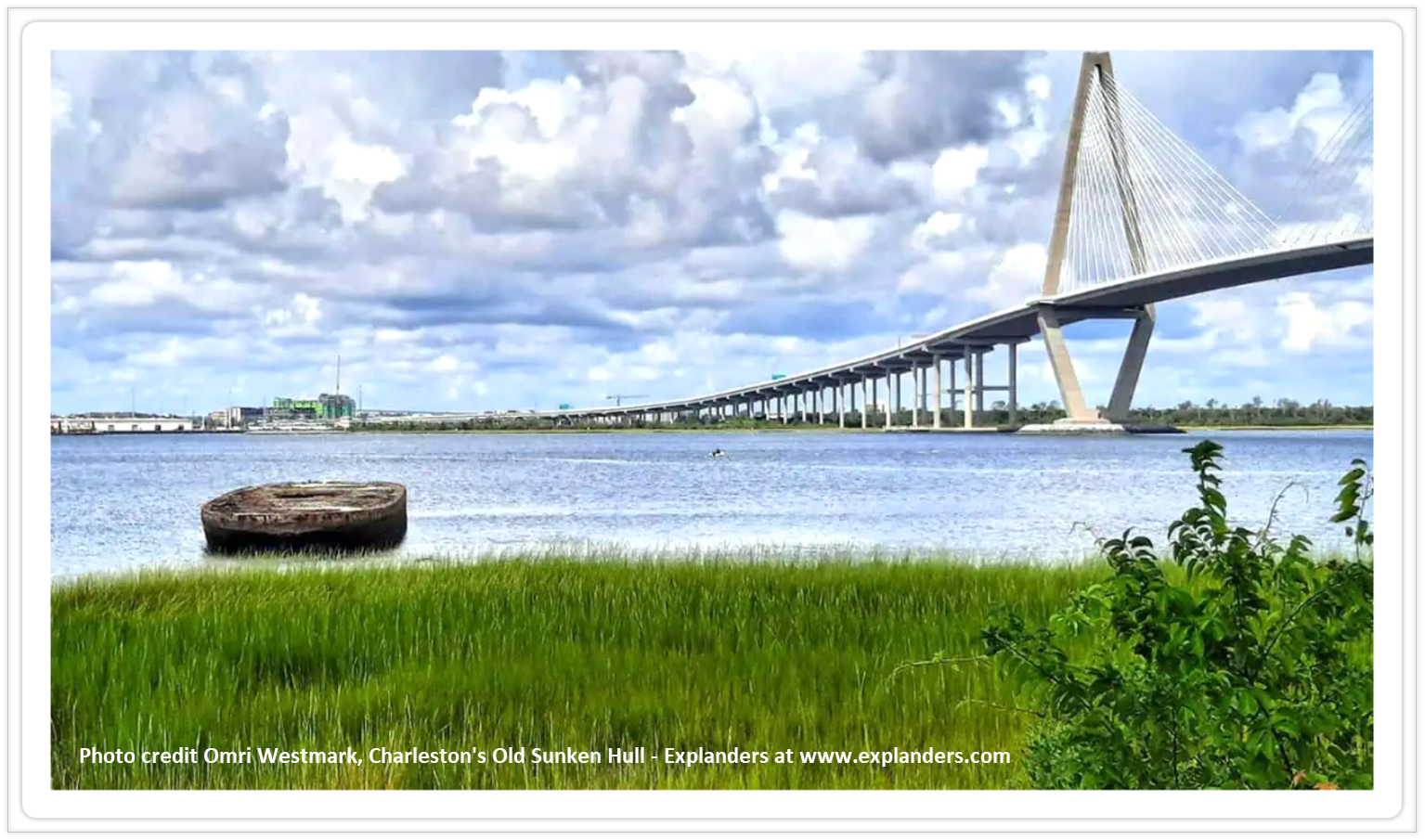 Current photo of the Sawyer's sunken hull in Charleston, courtesy Omri Westmark at www.explanders.com
Current photo of the Sawyer's sunken hull in Charleston, courtesy Omri Westmark at www.explanders.com
